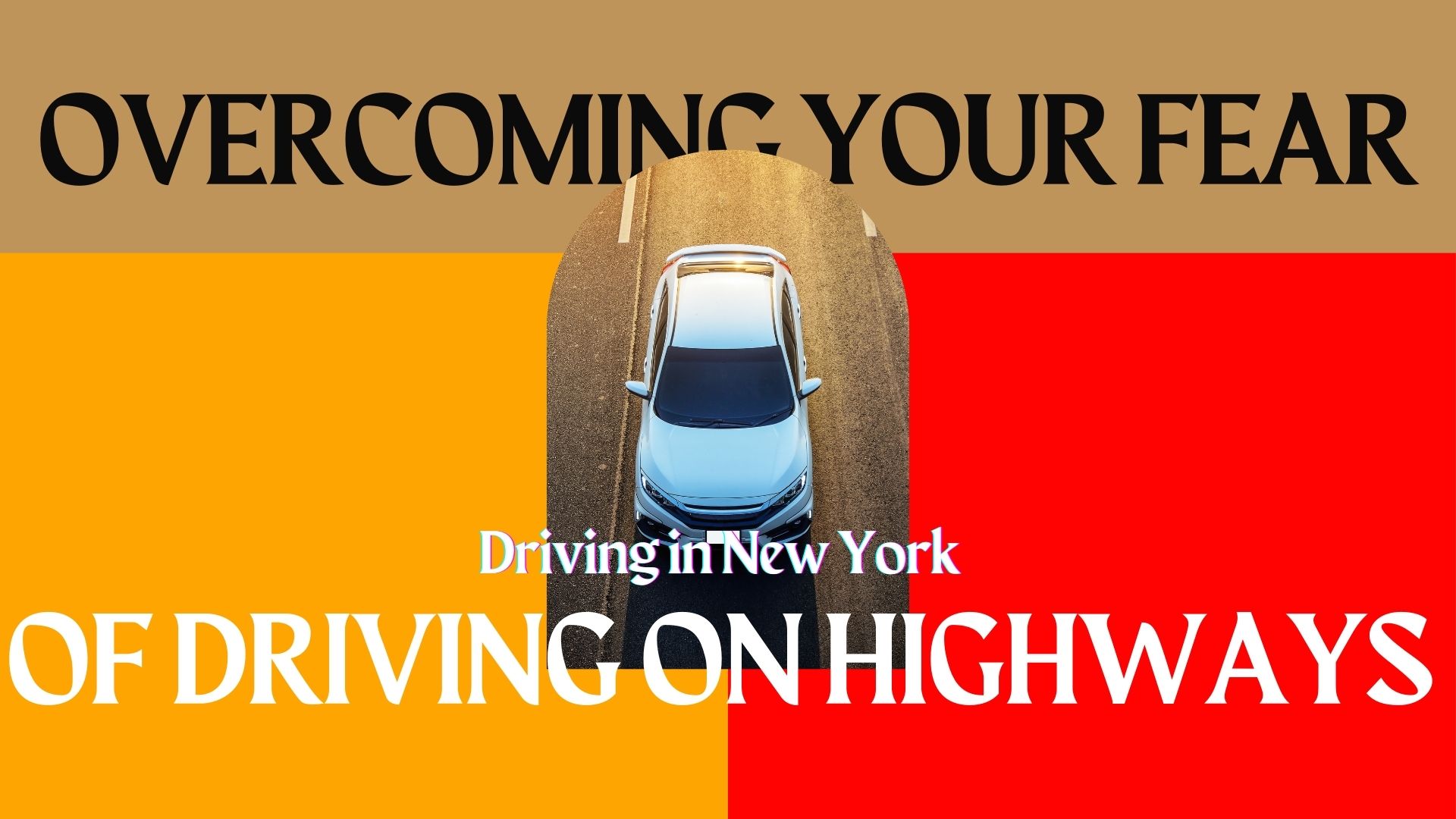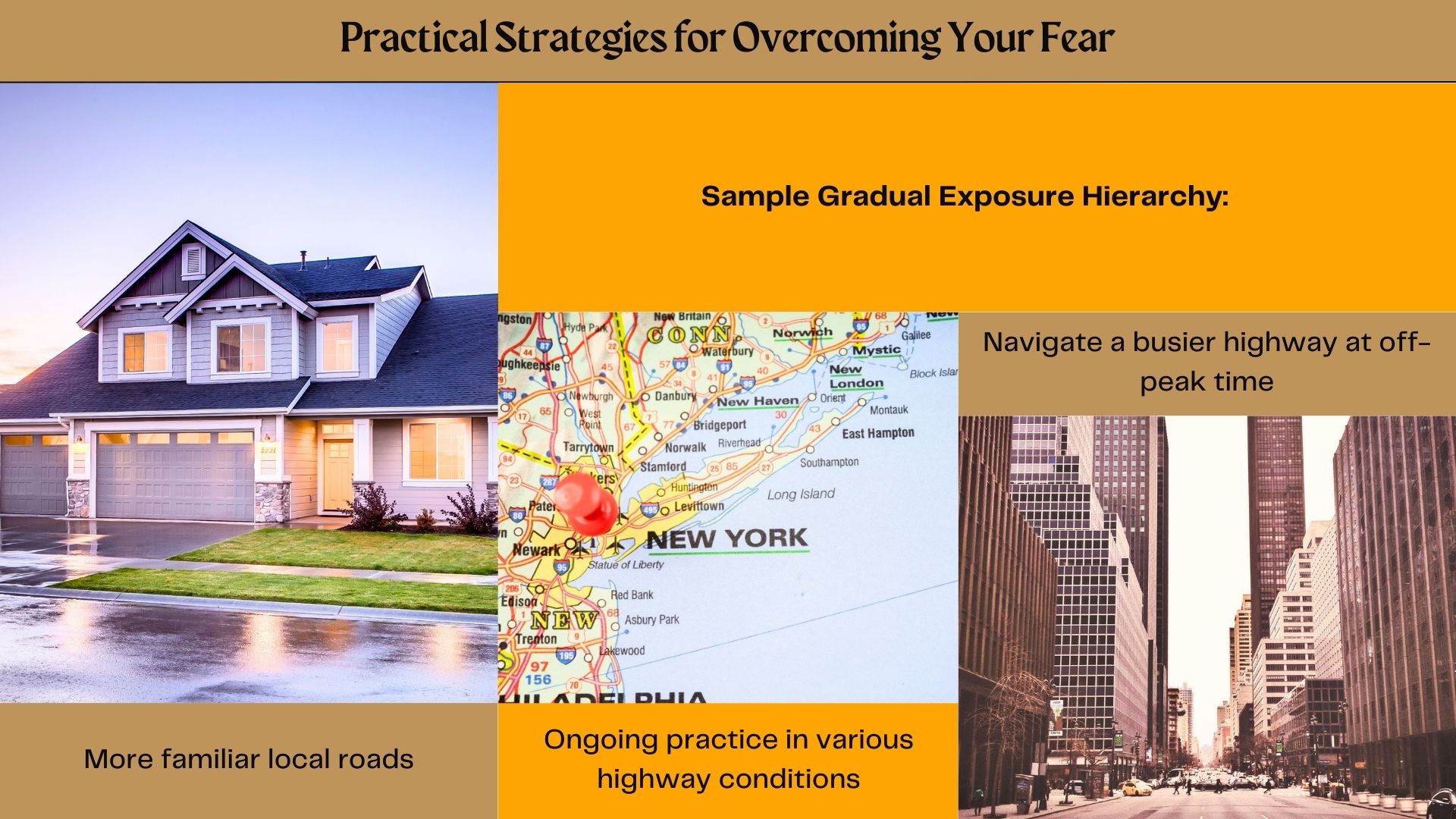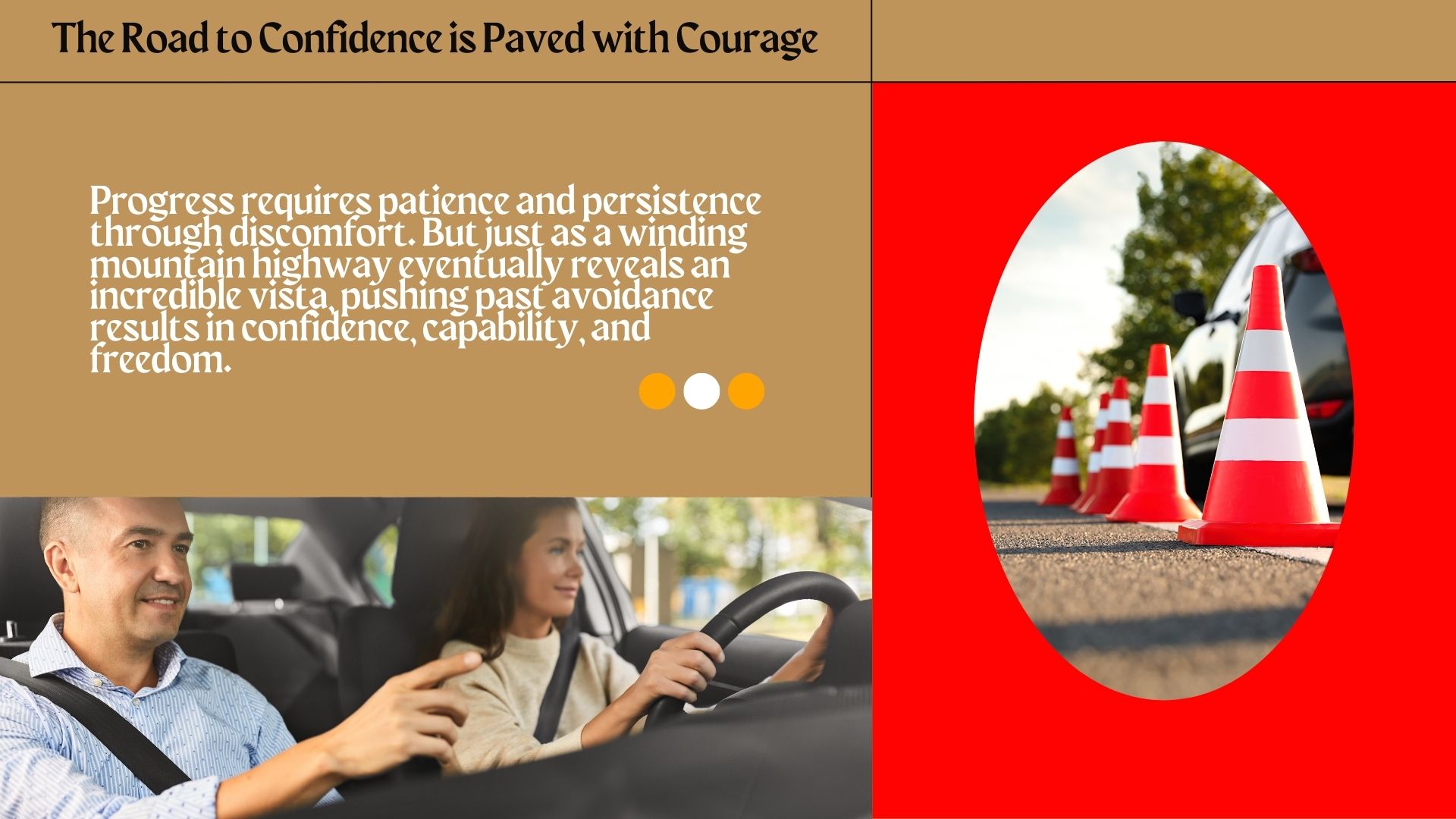Overcoming Your Fear of Driving on Highways

Table of Contents
Driving on highways can be nerve-wracking, especially if you struggle with driving anxiety or a driving phobia. You may experience symptoms like rapid heartbeat, sweaty palms, muscle tension, and worrying thoughts about potential accidents or loss of control. This anxiety can even manifest when simply thinking about getting on a highway.
Unfortunately, avoiding highways limits not just your travel but also job opportunities, social events, and overall independence. Nearly 66% of Americans admit to some degree of driving anxiety. And for those who find highways intimidating, the solution is often avoiding them altogether rather than facing the fear head-on.
Conquering your highway anxiety is possible through gradual exposure therapy, cognitive restructuring techniques, professional support, and other practical coping strategies. This article will discuss actionable tips to help you overcome fear and drive more confidently on highways based on extensive research and first-hand experiences from recovered anxious drivers.
With dedication and consistent effort, freedom from your highway woes is within reach. The rewards of expanding your world through independent travel can be life-changing. So buckle up and shift gears into a more carefree driving mentality.
Understanding Your Fear
Before jumping into strategies to overcome anxiety, it's helpful to better understand the causes and effects of driving fears. This knowledge can make solutions more intuitive later on.
What Triggers Highway Anxiety?
There are a few common culprits that spark apprehension about highway driving:
- Past driving trauma - Being in or witnessing a bad highway accident can lead to lingering nerves or even PTSD. Over 60% of drivers experience some kind of accident or trauma that plants the seed for anxiety.
- Lack of confidence - Insufficient practice, poor driving skills, or self-doubt about your abilities can stir up unease on highways. New drivers especially struggle with merging and switching lanes.
- General anxiety - Those prone to anxiety in other areas of life often feel it in spades when driving too. Other phobias like a fear of losing control may also contribute.
Physiological and Psychological Effects
Anxiety symptoms manifest both physically and mentally when driving on highways:
Physiological symptoms:
- Rapid heartbeat or palpitations
- Sweating
- Muscle tension
- Shortness of breath
- Dizziness/nausea
Psychological symptoms:
- Excessive worry about accidents
- Intrusive thoughts of losing control
- Images of worst-case scenarios
- Tunnel vision/zoning out
- Difficulty focusing
These reactions are the body's hardwired response to perceived threats. But when triggered excessively, they interfere with normal functioning.
Everyday Nerves vs. Debilitating Phobia
Many new drivers feel some nerves, especially on highways with heavier traffic and faster speeds. Occasional, minor anxiety may just take more experience to overcome.
However, a true phobia diagnosed by a professional creates relentless, severe distress or avoidance that hinders daily functioning. Speaking with a therapist can help determine whether your fears have crossed into phobia territory. Self-help strategies may relieve symptoms, but clinical treatment is often needed in extreme driving fear cases.
Practical Strategies for Overcoming Your Fear

The good news is that a variety of techniques can help anxious drivers overcome fear and navigate highways with calm assurance. Implementing a few key tactics builds skill and confidence over time.
Gradual Exposure
Exposure therapy involves progressively confronting feared driving situations until they no longer cause excessive distress. This retrains the brain to realize that highways are not as dangerous as they seem.
- Start by driving more familiar local roads, then smaller highways, working your way up to busier ones.
- Stick to lighter traffic times to minimize stimuli early on.
- Play relaxing music and practice deep breathing or meditation.
- Consider taking refresher lessons from a driving instructor to polish rusty skills.
Pushing too far too fast can backfire, so pace yourself. However, resisting avoidance is key for growth.
Sample Gradual Exposure Hierarchy:
- Week 1: Drive on familiar 4-lane roads
- Week 2: Access a quiet, straight highway
- Week 3: Navigate a busier highway at off-peak time
- Week 4: Merge and switch lanes during heavier traffic
- Week 5+: Ongoing practice in various highway conditions
Cognitive Restructuring
Negative thoughts often exacerbate fear and avoidance. Counteracting these thought patterns changes your perception.
- Identify distorted thoughts then challenge them with realistic, positive self-talk. ("I will lose control on the highway" transforms into "I am a competent driver able to handle these roads.")
- Instead of dreading potential crashes, visualize yourself driving calmly.
- Focus on previous highway successes rather than hypothetical dangers.
Seeking Support
Anxiety flourishes in isolation but diminishes when brought into the light. Connecting with others curbs feelings of shame and inspires continued progress.
- Enlist an anxiety specialist to equip you with targeted treatment.
- Join driving fear support groups to share your journey with empathetic strangers.
- Explicitly discuss anxieties with loved ones for reassurance.
Additional Tips for Highway Driving Safety
Implementing the following practical strategies fosters overall confidence in navigating highways safely and smoothly:
Inspect and Prep Your Vehicle
- Ensure tires have adequate pressure and tread. Conduct other standard car maintenance for safety.
- Clear all windows of ice, snow, fog, or other vision barriers.
- Adjust seat positioning and mirrors to optimize line of sight.
Study Rules of the Road
- Review highway/freeway signs and understand right-of-way protocol.
- Brush up on merging and switching rules and techniques.
- Learn how to safely pull over and re-enter highways.
Practice Defensive Driving
- Maintain at least a 3-second following distance from other vehicles.
- Drive in the middle or left lanes to avoid merging traffic.
- Signal properly when changing lanes and allow plenty of space.
- Use cruise control to avoid unintentionally speeding up.
Minimize Distractions
- Refrain from phone calls, texting, loud music, or complicated navigation.
- Set GPS before driving and use voice directions when possible.
- Pull over safely if you need to handle any major distractions.
Take Breaks to Avoid Fatigue
- Stop every 2-3 hours to revive concentration and reduce highway hypnosis.
- Switch drivers periodically on lengthy road trips.
- Get adequate sleep before an extended drive.
Equipped with the right knowledge and tools, navigating highways can become second nature. By facing fears head-on and being prepared, you WILL overcome anxiety and expand your world through independent travel.
The Road to Confidence is Paved with Courage

Conquering driving fears and mastering highways opens up a world of possibility and independence. By first understanding the root causes of anxiety behind the wheel, drivers can implement targeted solutions. With a combination of exposure therapy, thought restructuring, social support, and driving best practices, fear transforms into focus.
Progress requires patience and persistence through discomfort. But just as a winding mountain highway eventually reveals an incredible vista, pushing past avoidance results in confidence, capability, and freedom.
Rather than detour around fear, meet it head-on with compassion for yourself and others sharing this common struggle. Choose to pave over old hurts and barriers with new paths toward healing. The road to confidence is paved with courage.
Keep your eyes on the horizon of hope. And know that wherever fear currently has you idling in life, you possess the power to shift gears and accelerate ahead.
Frequently Asked Questions
-
1. How long does it take to overcome anxiety about highway driving?
There is no universal timeline as progress depends on an individual's severity of fear and consistency in facing challenging driving experiences. But with a few months of dedicated practice, most drivers begin to feel more comfortable on highways. Overcoming long-held phobias or PTSD generally takes longer with a trained therapist.
-
2. Will taking anxiety medication help me drive on highways?
Medications may temporarily reduce anxiety symptoms but do not directly address the root thought patterns and avoidance tendencies underlying phobias. Through exposure therapy and cognitive work, drivers can experience longer-lasting changes unassisted by medications. However, certain prescriptions enhance therapy effectiveness in some cases under doctor supervision.
-
3. What if I experience a panic attack on the highway?
The safest first step is signaling to change lanes to the furthest right lane, then exiting safely and pulling over at the first opportunity. While remaining parked: Minimize physical arousal by controlling your breathing rhythmically and relaxing tense muscles. Counter fearful thoughts rationally rather than emotionally reacting. Remind yourself panic attacks always pass and driving abilities remain intact. When symptoms sufficiently subside, resume driving and consider your triumph over panic as progress!
-
4. Do driving fears ever go away completely?
For many who put consistent work into anxiety relief strategies, intrusive thoughts or worries mostly fade over time. But some residual discomfort may resurface during major driving challenges or new experiences. This is normal even for the most seasoned travelers. Remember to exercise compassion with yourself and understand occasional backsliding is expected. Maintain an overall forward-leaning trajectory toward recovery.

 WhatsApp
WhatsApp
